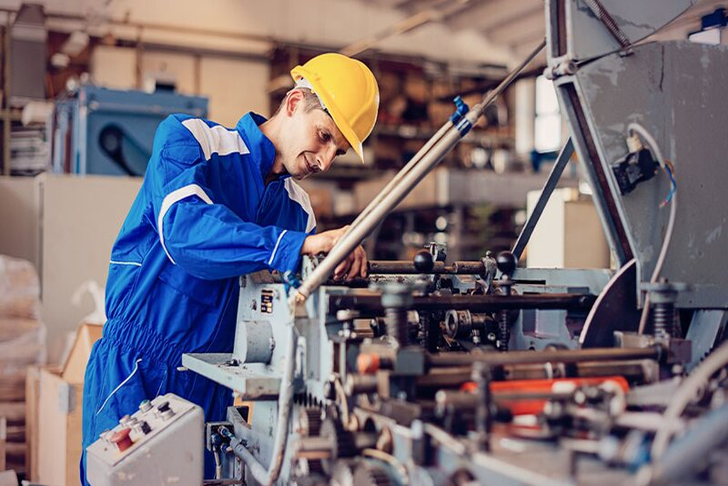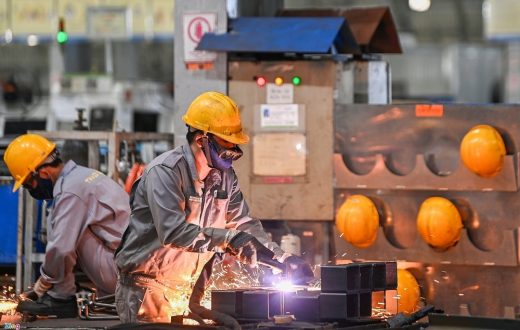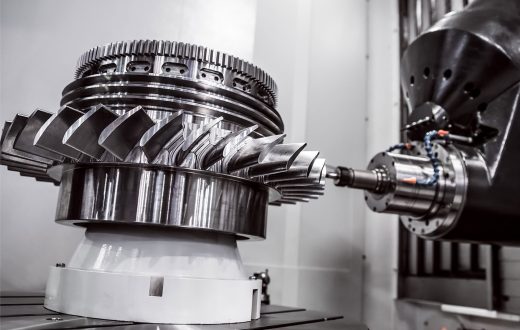The steel industry is one of the key sectors of Vietnam’s economy, playing a crucial role in the development of construction, mechanical engineering, shipbuilding, and various other fields. To meet domestic steel production demands and aim for exports, the design and manufacturing of industrial steel machinery have become a top priority, bringing significant technical and economic value.
Current Status of Industrial Steel Machinery Design and Manufacturing in Vietnam
Growth of the Steel Industry
Vietnam has witnessed significant growth in the steel sector in recent decades, with major steel plants and industrial zones such as Hòa Phát, Formosa Hà Tĩnh, and Pomina. The demand for industrial equipment and machinery to support steel production, processing, and machining is rapidly increasing.
Development of the Mechanical Engineering Sector
Vietnam’s mechanical engineering sector has made remarkable progress, with investments in advanced technologies and local design capabilities. However, certain modern machinery in the steel industry still needs to be imported, resulting in high costs and dependence on foreign technology.
Opportunities for Localization
Localizing steel industry equipment is an inevitable trend to reduce costs, enhance competitiveness, and master technology. The Vietnamese government and domestic enterprises are actively promoting the design and manufacturing of industrial machinery to increase localization rates and reduce reliance on imports.
Process of Designing and Manufacturing Industrial Steel Machinery
1. Survey and Requirement Analysis
- Assess the specific needs of steel plants, including product types, production volume, and technical requirements.
- Analyze the production environment, operating conditions, and material characteristics.
2. Detailed Design
- Utilize CAD/CAM software to create detailed machinery and equipment drawings.
- Ensure design optimization to minimize production and maintenance costs.
3. Material and Manufacturing Technology Selection
- Use heat-resistant, wear-resistant, and high-durability materials suitable for the harsh environment of the steel industry.
- Apply modern technologies such as CNC machining, laser cutting, automated welding, and metal casting to ensure quality.
4. Manufacturing and Assembly
- Manufacture components individually and then assemble them into a complete system.
- Conduct quality checks at each stage to ensure precision and reliability.
5. Testing and Trial Operation
- Conduct trial runs of completed machinery to check performance and stability.
- Adjust technical parameters to achieve optimal efficiency before delivering to customers.
Common Types of Industrial Machinery in the Steel Industry
1. Steel Rolling Machines
- Used to roll steel billets into products such as steel plates, steel coils, or shaped steel.
- Requires a design that ensures durability and precision during continuous operation.
2. Steel Cutting Machines
- Employ plasma cutting, laser cutting, or mechanical cutting technology to shape steel products.
- Demands high speed, accuracy, and the ability to handle various thicknesses.
3. Steel Welding Machines
- Used for assembling steel structures or shaping products.
- Integrated with automated welding and numerical control technology to enhance efficiency.
4. Steel Forming Machines
- Serves the production of shaped steel such as steel pipes, angles, or boxes.
- Requires high uniformity in output products.
Challenges in Designing and Manufacturing Steel Industry Machinery in Vietnam
1. Lack of Advanced Technology
Core technologies such as large-scale billet casting and precision machining still rely on imported equipment.
2. High Investment Costs
Researching, designing, and manufacturing steel industry machinery requires significant investment in equipment, workforce, and materials, posing challenges for small and medium enterprises.
3. International Competition
Foreign companies with extensive experience and advanced technology place significant pressure on local businesses in terms of quality and pricing.
Trends and Solutions for Development
1. Application of Industry 4.0
- Integrate Artificial Intelligence (AI), IoT, and digital controls into machinery design and operation to enhance production efficiency.
2. Investment in Research and Development (R&D)
- Encourage enterprises to collaborate with research institutes and universities to develop localized technological solutions.
3. Building a Local Supply Chain
- Strengthen connections between mechanical engineering companies and the steel industry to establish a closed supply chain, reducing dependency on imports.
4. Training High-Quality Human Resources
- Train engineers and skilled workers specializing in machinery design and manufacturing to meet the steel industry’s domestic needs.
Conclusion
The design and manufacturing of industrial steel machinery in Vietnam not only provide an opportunity to improve local production capacity but also contribute to building a sustainable and self-reliant industrial sector. Despite existing challenges, with proper investment and close collaboration among stakeholders, Vietnam has the potential to emerge as a major industrial machinery manufacturing hub in the region.



